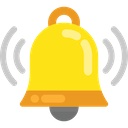Getting ready to help my dad with the front suspension rebuild on his 63 TR4. Have been scouring the forums on a good writeup and there seem to be several excellent writeups on other models, but haven't found one for the TR4 (checked the wiki too).
1. does anyone know of a good writeup on the TR4?
2. not knowing other Triumphs very well, is there a writeup for another model that would act as a good guide (e.g. is a TR4 suspension more like a 3/3A or a 6 or a completely different beast?)
Have done a full rebuild on the front suspension for my 72 OpelGT which has a nasty/dangerous transverse spring so I'm familiar with the dangers of springs, etc. and the general terms of suspension work, but I'm not a British car mechanic and any guidance is much appreciated.
-Brian
1. does anyone know of a good writeup on the TR4?
2. not knowing other Triumphs very well, is there a writeup for another model that would act as a good guide (e.g. is a TR4 suspension more like a 3/3A or a 6 or a completely different beast?)
Have done a full rebuild on the front suspension for my 72 OpelGT which has a nasty/dangerous transverse spring so I'm familiar with the dangers of springs, etc. and the general terms of suspension work, but I'm not a British car mechanic and any guidance is much appreciated.
-Brian

 Hi Guest!
Hi Guest!

 smilie in place of the real @
smilie in place of the real @
 Pretty Please - add it to our Events forum(s) and add to the calendar! >>
Pretty Please - add it to our Events forum(s) and add to the calendar! >> 

